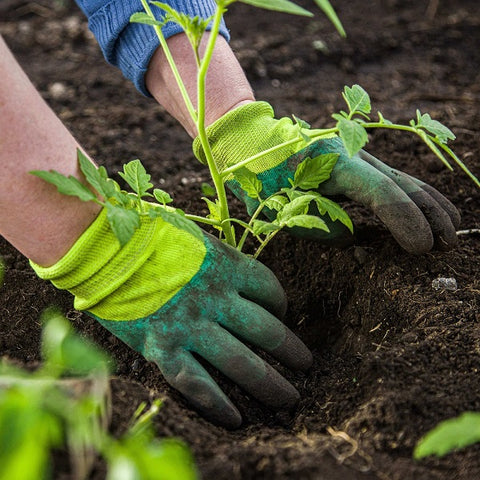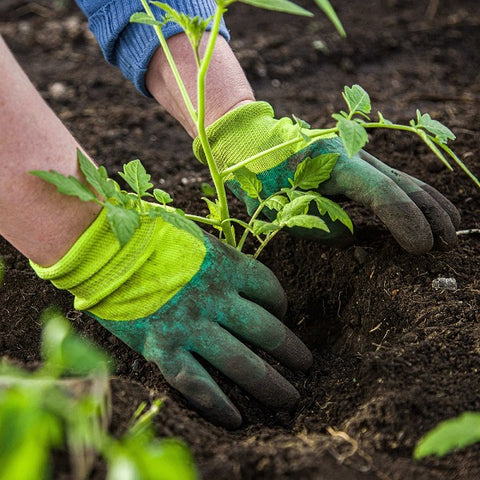
Imagine the gentle rustling of leaves, the soft fragrance of herbs in the air, and the soothing ritual of brewing your own cup of tea from the comfort of your home. With a tea garden, you can transform your outdoor space into a haven of tranquility while cultivating a variety of herbs and plants for your favorite brews. In this comprehensive guide, we'll walk you through the steps of creating your very own tea garden, from selecting the perfect location to nurturing your tea herbs and, finally, enjoying a cup of homegrown goodness. Additionally, we'll introduce you to popular herbs that you can include in your garden to elevate your tea experience.The following content also has some reference value for raised garden beds.
Creating Your Tea Garden: Step by Step
Choosing the Right Location
Selecting the ideal spot for your tea garden is paramount to its success. Here's what to consider:
- Sunlight: Most tea herbs thrive in full to partial sunlight, so choose a location that receives at least 4-6 hours of sunlight each day.
- Climate: Consider your local climate and the specific needs of the herbs you plan to grow. Some herbs are hardier than others and can withstand cooler temperatures or winter conditions.
- Soil Quality: Ensure that the soil in your chosen area is well-draining and fertile. If necessary, amend the soil with compost or other organic matter to improve its texture and nutrient content.
Selecting Your Tea Herbs
Now, let's dive into the herbs you can include in your tea garden. Here are some popular choices:
a. Mint
Varieties: Peppermint, spearmint, chocolate mint, and more.
Why Grow: Mint is a classic choice for tea due to its refreshing and invigorating qualities. It pairs well with various flavors and can be enjoyed as a standalone herbal tea or blended with other herbs.
b. Chamomile
Why Grow: Chamomile is renowned for its calming and soothing properties. Its delicate, daisy-like flowers are used to make a mild, floral tea known for promoting relaxation and aiding digestion.
c. Lemon Balm
Why Grow: Lemon balm, with its citrusy aroma and flavor, adds a bright and zesty note to your tea. It's known for its calming effects and is often used to alleviate stress and anxiety.
d. Lavender
Varieties: English lavender, French lavender, and more.
Why Grow: Lavender imparts a fragrant and slightly sweet flavor to tea. It's celebrated for its relaxing properties and can be used to create a soothing bedtime infusion.
e. Rosemary
Why Grow: Rosemary's aromatic leaves add depth and earthiness to your tea. It's known for its cognitive benefits and is believed to improve memory and concentration.
f. Lemon Verbena
Why Grow: Lemon verbena offers a strong lemony scent and flavor that's perfect for brightening your tea. It's valued for its digestive and relaxation benefits.
g. Echinacea
Why Grow: Echinacea is a popular herb for strengthening the immune system. It's often used in teas to support overall wellness, especially during cold and flu seasons.
h. Thyme
Why Grow: Thyme lends a savory and herbal note to your tea. It's believed to have antimicrobial properties and can help soothe a sore throat.
Planting Your Tea Garden
Now that you've chosen your tea herbs, it's time to plant your garden. Here's a step-by-step guide:
a. Soil Preparation:
- Test your soil's pH and amend it if necessary to create a slightly acidic environment, generally around 6.0 to 6.5 for most tea herbs.
- Enhance soil quality by adding compost or well-rotted organic matter.
b. Spacing:
- Consider the mature size of your herbs and space them accordingly. Most herbs should be planted at least 12-18 inches apart to allow for healthy growth.
c. Planting:
- Dig holes that are slightly larger than the root balls of your herbs. Place the herbs in the holes at the same level they were in their nursery pots.
- Gently pat down the soil around each plant to remove air pockets.
d. Watering:
- Give your herbs a good watering after planting to help them settle into their new home. Be sure to maintain consistent moisture levels, as herbs generally prefer evenly moist soil.
e. Mulching:
- Apply a layer of mulch around your herbs to conserve moisture, regulate soil temperature, and suppress weeds.

Maintenance and Care
Caring for your tea garden is relatively straightforward, but it requires attention to detail. Here's what you need to do:
a. Watering:
- Water your herbs regularly, especially during dry spells. Herbs like chamomile and mint prefer consistently moist soil.
b. Pruning:
- Regularly prune your herbs to encourage healthy growth, improve air circulation, and prevent overcrowding. This will also ensure a steady supply of fresh leaves for your tea.
c. Pest Control:
- Keep an eye out for common garden pests like aphids or spider mites. Use natural pest control methods or insecticidal soap to protect your plants.
d. Harvesting:
- Harvest your tea herbs when they're at their peak of flavor and aroma. This often means plucking young leaves or flowers just before or during flowering.
Brewing Your Own Tea
The most rewarding part of having a tea garden is enjoying the fruits of your labor. Here's how to brew your own tea:
a. Harvest:
Carefully pluck the fresh leaves, flowers, or stems from your herbs. Harvest early in the morning for the best flavor.
b. Preparation:
- Rinse the harvested herbs gently to remove any dirt or insects.
- If you prefer fresh tea, use the leaves immediately. For dried tea, spread the herbs on a tray and let them air dry in a cool, dark place.
c. Brewing:
- Place the dried or fresh herbs in a teapot or infuser.
- Boil water and pour it over the herbs. Cover and steep for the recommended time, usually 5-10 minutes, depending on the herb.

d. Enjoy:
- Pour yourself a cup of homemade tea and savor the flavors and aromas of your garden.
Conclusion: A Garden of Serenity and Flavor
Cultivating a tea garden at home is a delightful journey that connects you with nature while offering the simple pleasure of sipping freshly brewed tea. As you nurture your tea herbs and watch them flourish, you'll find solace in the tranquility of your garden. Moreover, the flavors and aromas of your homegrown herbs will elevate your tea-drinking experience to new heights. So, why not embark on this serene and flavorful adventure in your own backyard? Create your tea garden today and savor the rewards of homegrown goodness, one cup at a time.









